If you click on a link and make a purchase we may receive a small commission. Read our editorial policy.
Exploring the '90s era Star Wars Expanded Universe with Kevin J. Anderson
Author Kevin J. Anderson reminisces about the early days of the Star Wars Expanded Universe
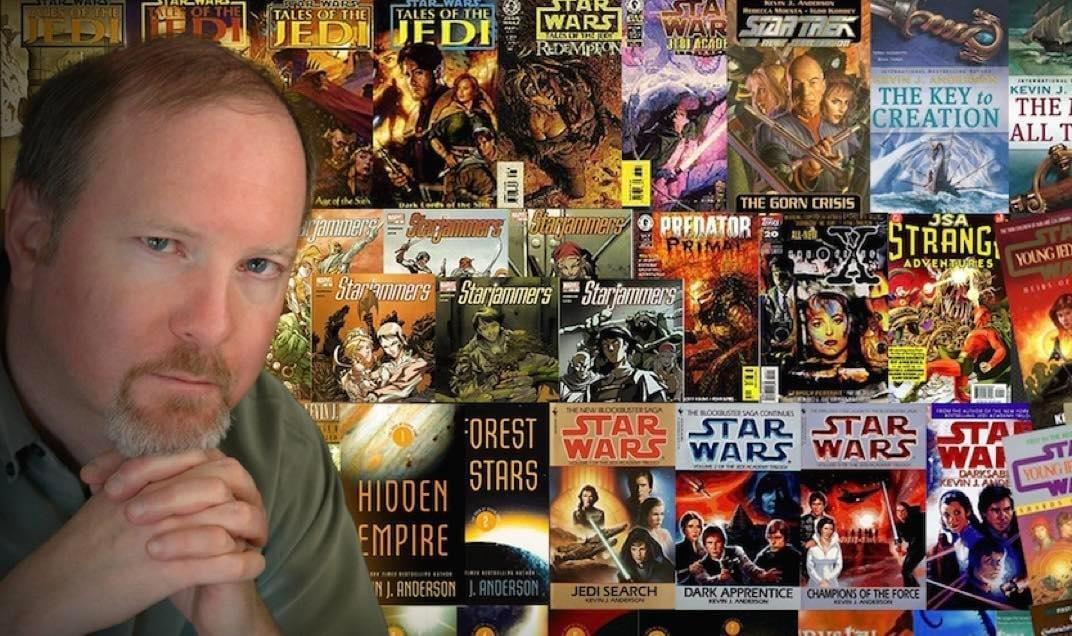
During the '90s the Star Wars franchise lived and breathed at the bookstore. In the days before Disney acquired Lucasfilm (and before George Lucas produced the prequel trilogy), the Star Wars story was told through a series of novels published by Bantam Spectra. These novels imagined the adventures of Luke Skywalker, Han Solo, Leia Organa, and Chewbacca after the events of Return of the Jedi. The novels kept the Star Wars franchise alive in a time when no movies or television shows were being produced, and they regularly topped the New York Times Best Sellers list.
These novels were penned by a variety of talented science fiction authors, including the critically acclaimed writer Kevin J. Anderson. During the '90s Anderson was one of the most prominent Star Wars authors. His first outing was the Jedi Academy Trilogy, a three-book series that depicted Luke Skywalker attempting to start his own school for Jedi. Along with his wife Rebecca Moesta, Anderson wrote the Young Jedi Knights series, which focused on Han Solo and Leia Organa’s teenage children.
Anderson also wrote Star Wars comics, pop-up books, sourcebooks, and edited popular anthologies such as Tales from the Mos Eisley Cantina. Popverse recently caught up with Anderson while he was appearing at Dragon Con 2022. We were able to sit down with the author, and discuss what it was like to work on Star Wars in the days before the prequels and Disney. Anderson shared his insights on what it was like to work with Lucasfilm, the restrictions he was given, his favorite projects, and his thoughts on the Disney buyout.
Popverse: Star Wars was a different world in the '90s. We didn’t have multiple Disney+ projects. It was basically a handful of science fiction authors building on the foundation of this established universe.
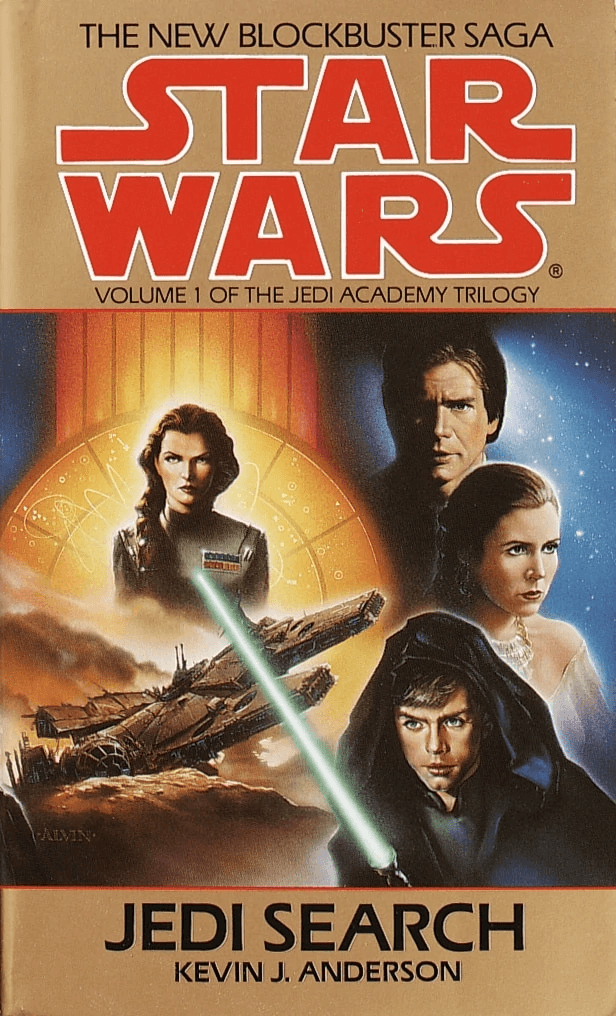
Kevin J. Anderson: That was good in that it was kind of small scale. We were like the Stranger Things group, we all figured out what's going on, and we made it work. When I was starting to write my Jedi Academy trilogy, Timothy Zahn's Heir to the Empire was the only Star Wars book out. His second one hadn't even come out yet. We didn't know that there was a Star Wars line, it was just Tim wrote a book, and it looked like it was going to be a trilogy.
And when I got asked, then they sent me a review copy of Dark Force Rising. And Tim was just finishing writing The Last Command. And I started plotting my trilogy. I outlined it, had some characters in it, and I talked with Tim, on the phone. We wrote letters back and forth in the days that you actually wrote letters and mailed them back and forth.
And I said, 'Hey, I've got this character who I'm introducing, and could you just mention him in your book so that it kind of all ties together?' Because I was going to make my books right after his, so that I thought we would read them in a nice continuity. Well, you know, that timing got all screwed up as other books got published all over the place.
Who was the character?
He was Moruth Doole. He was sort of a crime lord, smuggler guy. Tim did me the favor of just mentioning my guy in his book so that the name appeared, and then it appeared in my novel as a main character. If I'm remembering the timing right, Kathy Tyers' Truce of Bakura was the next book that came out after Tim's, but that's set immediately after Return of the Jedi, so that didn't really mess up with our timeline later on.
And so I'm plotting everything, and that's when I got asked by Dark Horse Comics if I would write an introduction to their Dark Empire series. And I said what Dark Empire series I never heard of this. And they sent me copies of it, and I read it. Because that was written independently from Tim's, they both sort of take place at the same time. And I was like, 'Well, how do I make this stuff fit together?' And Lucasfilm told me, 'Well, just don't worry about what happens in the Dark Empire series.'
And then I read them and I went, 'Oh, so Emperor Palpatine comes back, Luke goes to the dark side, and Leia has another baby.' That's not the kind of thing you can just ignore. So I had a lot of busy stuff kind of patching those two storylines together. But we really were just a handful of writers and we were all big Star Wars geeks and we plotted and planned. Tom Veitch, who did the Dark Empire comics, he and I started writing the Tales of the Jedi series.
That was kind of unique too because I got to know Tom since I wrote the introduction to the Dark Empire comics. And in my Jedi Academy trilogy, one of the main villains is Exar Kun, the spirit of a long dead Dark Lord of the Sith. And so he's just this bad guy that comes back and sort of haunts people and messes things up. Tom Veitch was writing a brand new series called Tales of the Jedi, that was set 4,000 years before the movies.
We got to talking a lot and I said, 'Well, I'm creating this long dead Dark Lord of the Sith. So what if he lived say, oh, I don't know 4,000 years before the movies?' And we just got this great brainstorm that in Tales of the Jedi we would do the entire origin story of Exar Kun. And Tom taught me how to write comics, and then that ended up being 12 issues of the Exar Kun story, then I did another big prequel called The Golden Age of the Sith Empire and then Fall of the Sith Empire. It just kind of spiraled out from there. And then I edited the Star Wars anthologies, and did the Jabba's Palace pop-up book and all kinds of great stuff.
I had that pop-up book! It was about one of the Gamorrean guards I think.
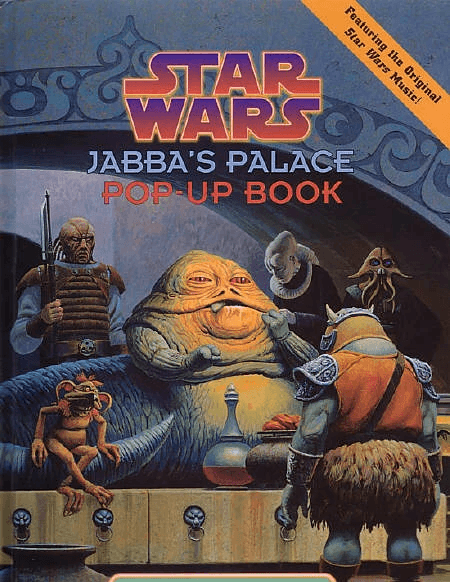
Oh yeah, there's a Gamorrean guard who is walking all over Jabba's palace, because he's lost something -his keys, right? This has been 30 years, I can't remember the details of the story.
Your Jedi Academy trilogy novels are indirectly responsible for me becoming a comic book reader. They referenced the events of the Dark Empire comics, which caused me to go to a comic store and buy them. That’s how I became a comic book reader.
Those comics all had gorgeous Dave Dorman covers. Because of that we got to know Dave Dorman very well, and then when my wife Rebecca (Moesta) and I did the Young Jedi Knights series, we just said you got to get Dave Dorman to do the covers for these things. And so Dave did all 14 of those covers.
Those were so beautiful. The cover to Lightsabers was breathtaking.
This is a fanboys dream. I mean, I grew up loving Star Wars, and then I got a cold call from my editor at Bantam saying, 'Kevin, do you like Star Wars, and would you like to write three sequels to it?' It was great.
What kind of restrictions, if any, did Lucasfilm give you in terms of certain characters, what you could do, what you could touch, and what you couldn’t?
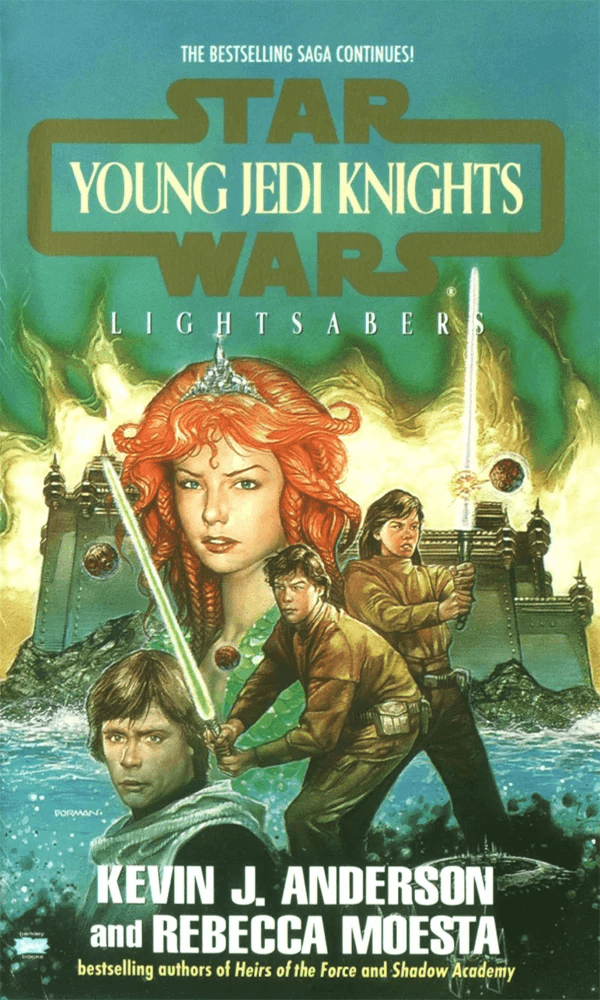
This was long before even The Phantom Menace was out. I can't speak to it because I'm not George, but I think he wasn't planning to do any more Star Wars stuff, which is why he said, 'Sure, have people write the books.' And then the books became so hugely popular, I'm hoping it sort of sparked his interest and he thought, 'Oh, well, maybe I should go back and do some.' Once he started thinking about doing more Star Wars movies, there were a bunch of things that were off limits to us, like anything to do with younger Luke or younger Leia.
He just wanted that to be a clear playing field that he could decide things. I had wanted to do things like a young Luke Skywalker series or a young Princess Leia on Alderaan series, and that was just 'No, you can't do that because we're saving that for if George ever does more movies.' For the most part it was obvious stuff, don't kill a main character and things, because they wanted it to keep going. The main part of it was just write a Star Wars story.
No serial killers and no graphic sex, and I mean they didn't have to say that, we knew not to. They would go read each manuscript and they'd send us a page or two of changes. But at the beginning it was pretty much our open sandbox to play around in. Because me, and Tim, and the other writers were big Star Wars fans, we weren't going to mess anything up because we wanted to have Star Wars around.
Do you have any favorite characters of the students that you developed for Luke's Jedi Academy?
Well, let's look at the Young Jedi Knights stuff. Tenel Ka was just my favorite. She has like a noble father and like a warrior mother, and she's always struggling with her identity because she comes from two worlds. She really resonated with a lot of people in a lot of ways. We've gotten lots of letters from people on Native American reservations. 'I feel like this struggle is me all the time.'
I remember the day that we went to Lucasfilm and pitched our idea for Lightsabers, which is book four. That's when the students are building their lightsabers, and they're testing them out for the first time. I really wanted to do this, and I kind of built up my courage to ask the Lucasfilm people. I said, 'Okay, in book four we want a lightsaber accident to happen so it cuts off Tenel Ka's arm.'
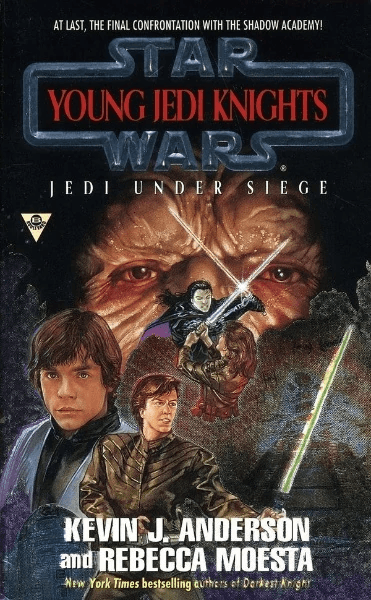
And there's reasons for that, in that we want to show that lightsabers are not toys. I mean, you see kids wailing on each other with the lightsaber. If they're real lightsabers, you're going to be killing people and cutting people's arms off. They're dangerous, they're not just toys. We wanted to show that even if Tenel Ka lost her arm, she could still kick butt. That she was disabled, but she was still badass, and she could do everything.
Lucasfilm said, 'Well, okay we can always just put a new arm on her.' And I went, 'No, that's not the point.' And so all the way throughout the series she refuses to get a prosthetic arm because she's badass enough as it is. But the reason that the lightsaber fails is because one of the characters kind of does a shoddy job and doesn't pay attention, and something fails, and she loses her arm.
So we also wanted to put in there that there are consequences to not doing a good job if people are depending on you. I make them sound like they're heavy-handed lessons, but they're not. They're great adventure stories.
I read that in fourth grade and the maiming of Tenel Ka stuck with me.
There's this utterly gut-wrenching moment in book 13, Trouble on Cloud City. Jacen slips and falls and Tenel Ka reaches out to grab him to save him, but she doesn't have an arm and he falls. So there it comes all the way full circle that if she had just gotten the prosthetic arm, she could have caught him. All these things tie together.
We love those stories so much, and all the characters that we added. Lowbacca and his little translating droid M-TD. We wrote them, and they came out every three months. So it just kept readers like yourself, it kept your interest. It's not a year between books, it's every three months. They had us do six, and then they had us do another five, and then they had us do another three.
They just kept it going, and there were administrative reasons for that. I think they didn't want those books to be coming out when the Phantom Menace came out because they wanted to focus on Phantom Menace stuff. Those of you old enough to remember, The Phantom Menace release date kept getting pushed back because things happen.
Right, I remember it being 1998 at one point, before moving to 1999.
When they would push back the release date they would go 'Oh, there's time for three more Young Jedi Knights books! Go write them.'
How much communication did all the Bantam era Star Wars authors have with one another? I imagine you spoke with them a lot due to editing the Tales anthology books.
At the beginning it was a small group, and most of us already knew each other anyway, because we would go to science fiction conventions. I knew Timothy Zahn, I knew Dave Wolverton, and I knew Kathy Tyers. This was well before Mike Stackpole got in, but I knew Mike Stackpole since I was 17 years old. And we all kind of were friends. Now I couldn't even list the names of everybody working in Star Wars, because there's so many of them.
We were plotting things and planting seeds in each other's books. When I got the job of doing the Tales from the Mos Eisley Cantina anthology, well obviously I'm going to ask Star Wars writers to write stories because you don't have to teach them that Star Wars is a big complicated universe. Those writers had already put in the homework of understanding the difference between a Mon Calamari Star Cruiser and the Millennium Falcon.
There's a lot of stuff to learn if you're just going to dip in and write a 15 page short story. But these were people who had already put in the work. Those are the first people we took, and then I went to other well-known science fiction writers and friends of mine. I think some of them even went on to write Star Wars projects of their own.
Do you have any favorite stories from those anthologies?
From the ones I wrote, I’d have to say the Rancor keeper story! I grabbed that one as soon as I did the Jabba's Palace anthology and said, I want to know the story of that Rancor keeper. That moment when the Rancor is killed, he's like sobbing because his pet is killed. I went, 'Oh I want to tell that story.'
And I really loved doing the IG-88 story in Tales of the Bounty Hunters anthology. You've got this psycho IG-88 who copied himself a bunch of times and he gets his consciousness uploaded into the Death Star just as the Rebel ships come flying into the core. Those were really fun.
There's a Twitter account called Crazy Ass Moments in Star Wars History. Recently, that was the moment that they picked, IG-88 uploads himself into the second Death Star.
I had a great time writing Star Wars. My total, that I can remember, was 54 projects, if you count the Young Jedi Knights, the comics, the pop-up books, the novels, and the Star Wars Chronology. Now, that was a nightmare, because when they asked me to write the Star Wars Chronology, there was a dozen or so books and that's great. But then they kept bringing out more and more books that I had to try to fit in.
I brought aboard Dan Wallace, another Star Wars fan who's done a lot of Star Wars things. The universe keeps getting bigger, and more interesting. I'm still a fanboy, but I love it because I'm not working in it anymore. I get to go and sit down in the theater and watch Rogue One and know nothing about it. I get to watch it like a real fan, rather than somebody who works in it and kind of looking at all the details.
During your panel you told a story about destroying Luke’s holocron, and how Lucasfilm asked Tom Veitch for permission since he was the one who had introduced the artifact.
Tom Veitch had created something called the Jedi holocron, which is sort of like a history database that can project Jedi history. He used that as a device in his Tales of the Jedi comics, and this is how we can learn the history of all the Jedi. In my Jedi Academy trilogy, Luke has his Jedi academy, and he's got a Jedi holocron so he can learn about stuff in the Jedi history and learn about the Jedi Order.
Because of the spirit of Exar Kun, who's the bad guy, the long dead Dark Lord of the Sith, he ends up kind of melting down the holocron and destroying it. And Lucasfilm was a little bit concerned. They said, 'Well, you didn't invent the holocron you can't destroy it.' My story hinged on them getting rid of it. Lucasfilm asked Tom Veitch, they said, 'Kevin wants to destroy the holocron, can he do that?'
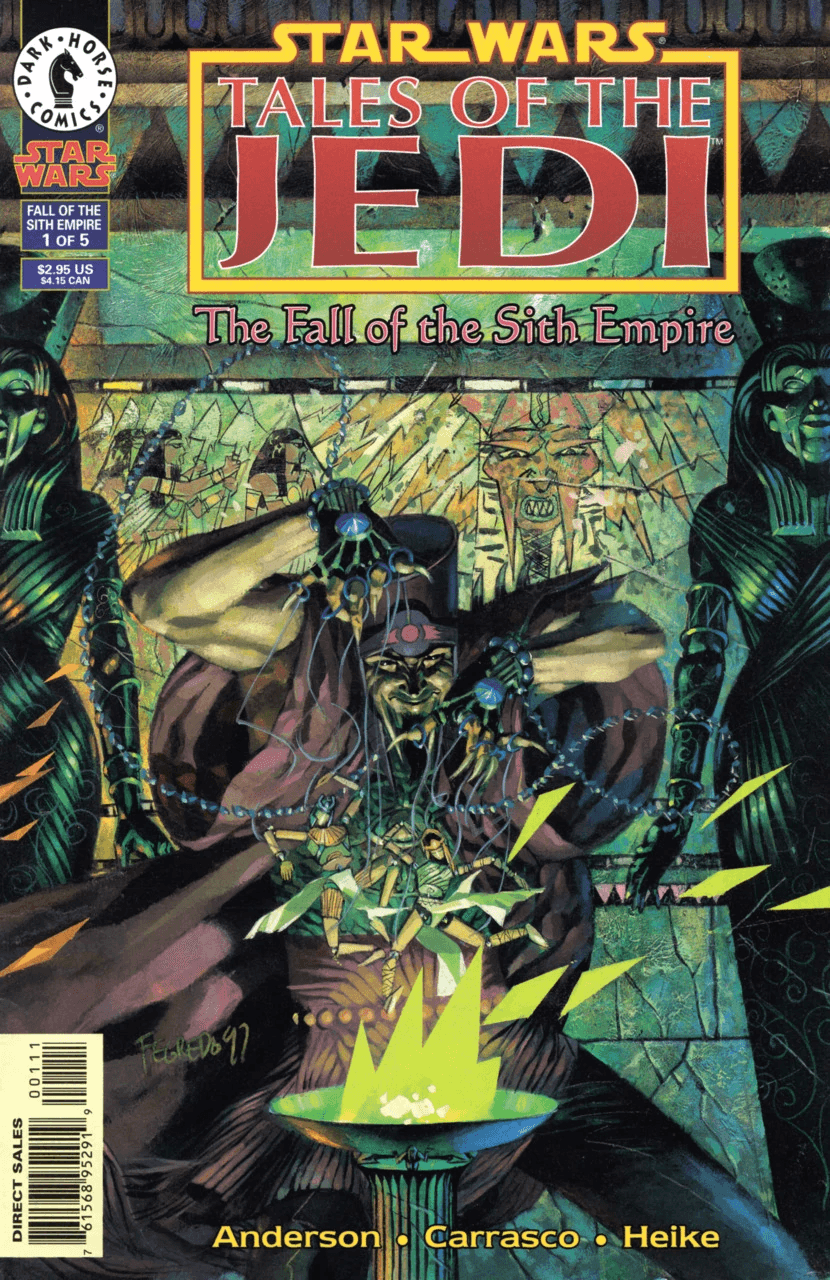
And Tom said, 'Sure, we'll just find another one if we need it.' That's the perfect answer. That's the flexibility in the Star Wars universe. If you found one in the old ruins somewhere, well, then you can find another one somewhere. In fact, you can find lots of them if you want.
What are you hoping will be the legacy of the '90s Star Wars early EU era that you were a part of? How do you hope people will remember it?
Fondly, I hope! But actually, one of the things that has really kind of warmed my heart is the very enthusiastic and serious reaction of so many Star Wars fans when Disney decided to make it Legends instead. The uproar was way different from what I expected, because I'm going well, 'You've seen Batman rebooted over and over again. And you've seen everything else and here's Star Wars history.' But boy, the loyalty and the enthusiasm that the other fans had.
I'm very glad that all my books are still out there. They have the Legends banner on them, but hey I'd rather be a Legend than be a plumber. They are starting to draw a lot of details from the Legends books and putting them in the new things. I've seen my stuff in the Star Wars Special Editions. I've seen it in the Solo movie. I've seen it in the Clone Wars cartoons.
A lot of my stuff is in The Last Jedi and a little bit in The Force Awakens. I'm glad that they're doing that rather than just making up something. Young Han Solo is fighting for the Imperial Army and he gets stationed to this revolt on Carida. Well, they could have used any name, but they used the name of a planet from one of my books, and I went 'Well, that's cool.' You get fanboy chills out of it. It shows that there are fans, not just corporate people, but they're actually fans who are working in the current version of Star Wars.
Jonesing for the big Star Wars thing? Bide your time by watching (or re-watching) all of Star Wars in chronological, release, or our custom machete order.
Follow Popverse for upcoming event coverage and news
Find out how we conduct our review by reading our review policy
Let Popverse be your tour guide through the wilderness of pop culture
Sign in and let us help you find your new favorite thing.


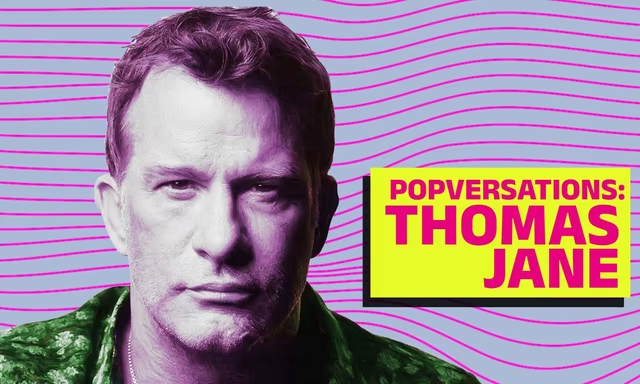


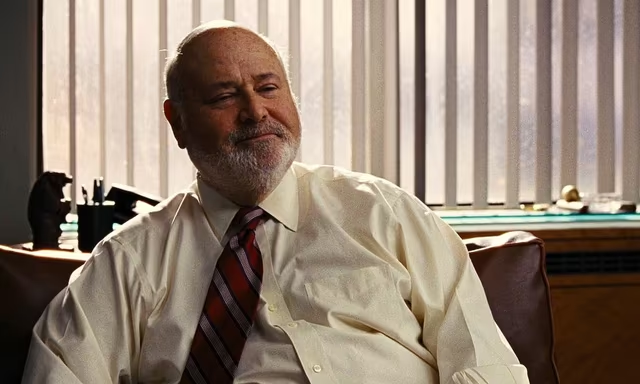


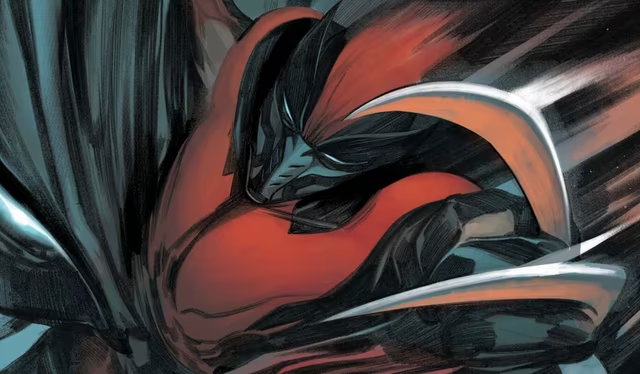
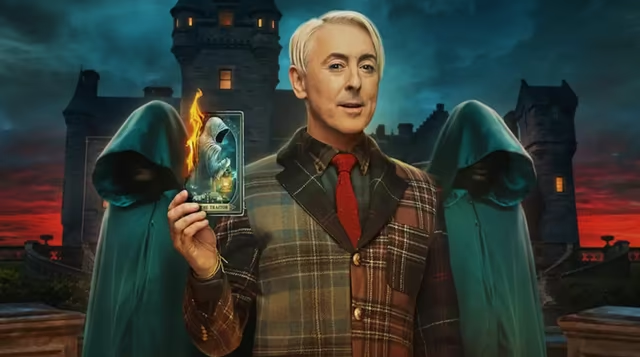






Comments
Want to join the discussion? Please activate your account first.
Visit Reedpop ID if you need to resend the confirmation email.